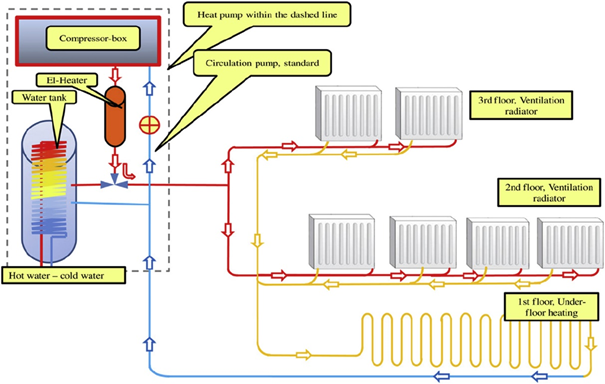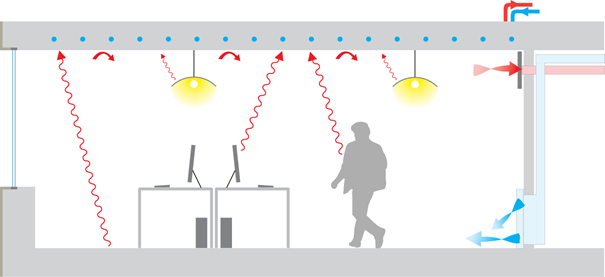Article by Henrikki Pieskä (KTH) and Qian Wang (Uponor)
A heat emission system is an integral part of a building’s HVAC-system. Heat emission system is the interface between the heat source and the building user, so a proper design is essential both for energy efficiency and user comfort.

The objective of studying heat emission systems in GEOFIT is to present designs for innovative low temperature heating (LTH) and high temperature cooling (HTC) systems for the studied pilot buildings. There are many types of LTH and HTC systems, but common to all of them is that in comparison with conventional heat emission systems they require smaller temperature difference between the heat source and the conditioned space to operate the system.
LTH and HTC have therefore potential for increasing the efficiency of ground source heat pumps, because the smaller temperature difference means the heat pump has to do less work to cover that difference. In temperate climates it is in some cases even possible to use passive cooling, where a HTC system is directly coupled with a ground heat exchanger, thus bypassing the heat pump completely.

© Center for the Built Environment at UC Berkeley, ©Caroline Karmann, CC-BY-SA-3.0

